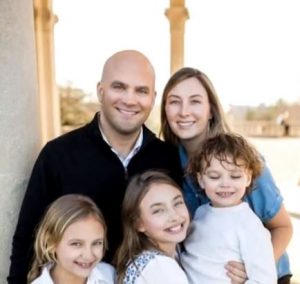
A New Way to Balance Digital Usage
It’s a concern for parents across the country.
Teenagers are consumed by countless digital distractions. Smart phones, gaming consoles, or any number of devices connected to the Internet compete for their attention.
Concerns over growing and habitual media use are nothing new, but the broad availability of portable devices seem to have “leveled up” the problem. Now, more children are becoming addicted to online content and gaming.
Popular video games like Fortnite are played by more than 200 million people. Some teens spend as much as 12 hours or more[i] a day playing online, while others spend the same amount of time engaged in social networks. This obsession can affect health as well as school and work performance.
A 2012 study estimated In 2018, The World Health Organization even classified video game addiction[iii] as a mental health disorder.
But how do you know when a habit has crossed over into an addiction? And what do you do when it is clear your son or daughter is addicted?
For children who show signs of internet addiction, a recent study[iv] suggests each child needs to be evaluated in context of their own unique situation. Personality traits, type of game(s) played, life situations and cultural expectations can all explain excessive gaming. For example, if the habit is used to replace real-life social interactions or escape from life traumas and stress, an Internet or gaming addiction may be in play.
“Today’s society is dependent upon technology, mobile devices, social media, and the Internet,” says Dr. Chris J. Tuell, clinical director of addiction services at Lindner Center of HOPE. “However, when dependence crosses over to an addiction, it’s time to take steps to regain control.”
Several habitual behaviors can indicate Internet and gaming addiction. “The three C’s of addiction also apply to Internet addiction,” says Dr. Tuell. “If someone exhibits a loss of control, a compulsion/obsession to be online, irritability when offline, or continues to use technology despite negative consequences, they may be suffering from Internet addiction.”
The Reboot Program
To combat Internet and gaming addiction, and provide a resource for families who need help, Lindner Center of HOPE has introduced a new program called “Reboot.” The first two weeks of the Reboot program involve a comprehensive assessment of the teenager to draft a course of treatment. The second two weeks focus on developing better habits with technology.
“For those struggling with self-control, this program helps them re-center their lives and avoid additional complications,” said Dr. Tuell.
According to Mental Health America[v], the nation’s leading non-profit mental health advocacy organization, children with Internet addiction often struggle with other mental health problems like alcohol and substance use, depression, and/or aggression.
Addiction experts at Lindner Center of HOPE assess if patients are suffering from one or more co-occurring disorders, like depression. Identifying underlying mental health conditions helps to personalize treatment plans for each “Reboot” patient – increasing their odds of winning the battle with internet and gaming addiction.
Addictions Expertise
In addition to internet and gaming addictions, Lindner Center of HOPE treats most substance and behavioral addictions, including heroin, morphine, hydrocodone, oxycodone, amphetamine, methamphetamine, LSD, alcohol, cocaine, marijuana and tobacco, gambling and pornography. Plans may include medication-assisted treatment, therapy or support groups, and screenings for underlying issues like depression and anxiety.
About Lindner Center of HOPE
Lindner Center of HOPE, located in Mason, OH, is a comprehensive mental health center providing patient-centered, scientifically advanced care for individuals suffering with mental illness. Learn more at LindnerCenterofHope.org.
# # #
[i] Feely, J. & Palmeri, C. (2018, Nov. 27). Fortnite Addiction Is Forcing Kids Into Video-Game Rehab. https://www.bloomberg.com/news/articles/2018-11-27/fortnite-addiction-prompts-parents-to-turn-to-video-game-rehab
[ii] Cash, H., Rae, C. D., Steel, A. H., & Winkler, A. (2012). Internet Addiction: A Brief Summary of Research and Practice. Current psychiatry reviews, 8(4), 292-298. https://www.ncbi.nlm.nih.gov/pmc/articles/PMC3480687/
[iii] Price, L. & Snider, M. (2018, June 19). Video game addiction is a mental health disorder, WHO says, but some health experts don’t agree. https://www.cincinnati.com/story/tech/nation-now/2018/06/18/gaming-disorder-who-classifies-video-game-addiction-health-disorder/709574002/
[iv] Kuss D. J. (2013). Internet gaming addiction: current perspectives. Psychology research and behavior management, 6, 125-37. doi:10.2147/PRBM.S39476 https://www.ncbi.nlm.nih.gov/pmc/articles/PMC3832462/
[v] Mental Health America. Risky Business: Internet Addiction. http://www.mentalhealthamerica.net/conditions/risky-business-internet-addiction










